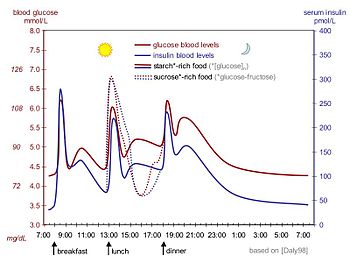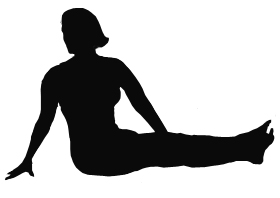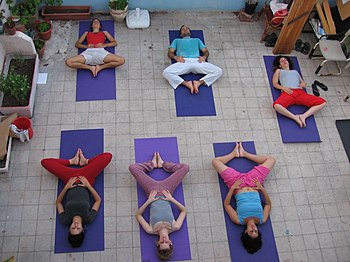Even if you regularly exercise when not sitting behind your desk, the amount of sitting most of us do still significantly raises your risk for diabetes, heart disease (including strokes and heart attacks), obesity and even certain types of cancer. For every two hours of sitting, you raise your risk of colon cancer by 8 percent, endometrial cancer by 10 percent, and lung cancer by 6 percent.
Diabetes
| Idealized curves of human blood glucose and insulin concentrations during the course of a day containing three meals. (Photo credit: Wikipedia) |
Heart Disease
When we sit, we are not burning as many calories as we would if we were up and moving around. So it takes longer for our bodies to burn off the calories we ate at lunch. This keeps the blood sugar higher for a longer period of time. And high blood sugar in effect causes tiny tears on the inside of veins and arteries – prime places for plaque to start accumulating and eventually cause heart disease. In the American Heart Journal article Circulation: Heart Failure, it documented men who sat for more than 5 hours per day increased their risk of heart disease by 34% verses men who only sat 2 hours per day.
Obesity
It is a well-documented fact that if you consume more calories than you burn, you will gain weight as the body stores the extra calories it doesn’t need at the time. It is a natural defense mechanism so that we have fat stores to draw upon in case of lean times.
By sitting, we are not burning off the calories we had for lunch and any snacks eaten during the day. The extra calories increase your weight which starts to cause other health problems, including diabetes. In a way it becomes the “Which came first, the chicken or the egg?” dilemma. Did diabetes cause your obesity or did your obesity cause diabetes?
 |
| Standing treadmill desk. |
There are several things you can do to lessen your risk of health issues due to sitting. First, get up and move around - as much as possible. That can mean walking over to a colleague’s desk instead of sending an email. Frequently get up and get a glass of water from the water cooler or a cup of coffee from the break room or cafeteria. Do a short series of stretches or yoga poses in your cubicle every hour or so.
Next, take a short 15-minute walk outside after lunch. Not only will it lower your blood sugar, but it will clear your head and reduce stress.
Finally get at least 2 ½ hours of moderate to high-intensity cardio exercise per week (preferably in short 20-30 minute segments) along with muscle-strengthening workouts twice per week. (We post a short workout video every week, so be sure to check back here each Thursday for a new, fun weekly workout!) While exercise won’t completely offset the effects of prolonged sitting, it will help.
Lastly, if you have a say in your office décor, consider getting a standing desk. Your body will thank you for it.













